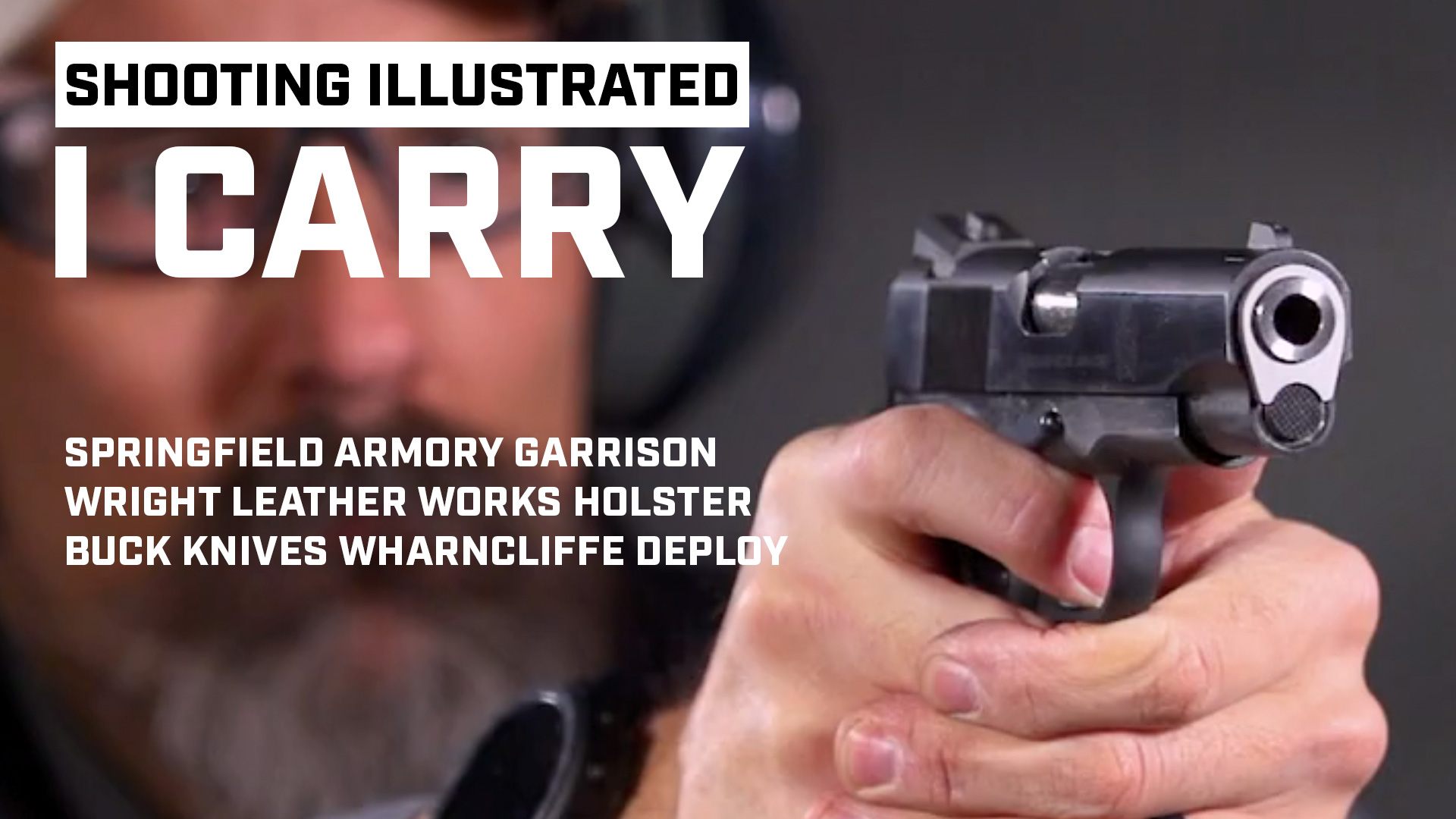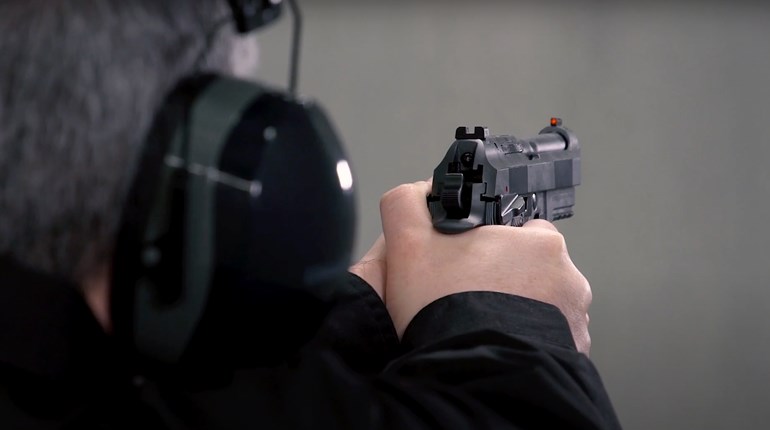
It should be obvious to gun owners that the road ahead is not exactly a superhighway. The way is fraught with bumps, ruts and dead ends, particularly if certain politicians gain the kind of power they desire to take away our gun rights. It should be further obvious that the best road crew to keep the way open is the NRA's Institute For Legislative Action. This organization should be supported and strengthened by everyone involved in the possession and use of firearms. That means end users, accessory makers and those firms that actually manufacture guns and ammunition. One of the leading firms in this role is Para-Ordnance, recently re-named Para USA.
In a recently announced and very generous program, the company has designated two of its best-selling models as the "Gun Rights" guns. For every one of these pistols sold, the firm will donate $25 to the NRA-ILA. Moreover, it has structured the program in such a way as to make it utterly simple for the buyer. Just buy the gun and the money is automatically delivered to the NRA-ILA. There is no need for the buyer to fill in coupons, do anything online or expend any shooting time whatsoever. Simply buy the guns at your local dealers, and Para does the rest.
There's no trickery involved. Para didn't add $25 to the price of the pistol to give itself a cushion. Instead, it cut its profit margin significantly in order to invest in the future of the rights of gun ownership and use. So, when you see that distinctively different hang tag on the trigger guard of a shiny, stainless-steel Para in your dealer's showcase, think about the effect of buying it. You will be—literally—sending money to the organization with a proven track record of preserving your Right to Keep and Bear Arms. And, of course, you get to keep the pistol.
Now, take a look at what you get. There are two models involved in the "Gun Rights" pistol program. They are both attractively priced and fully configured pistols with the features that brought the Para-Ordnance name to the forefront. It has been almost 20 years since we first heard about this firm and the innovation that pretty well shook up the world of handguns—a high-capacity receiver for a 1911-style .45 pistol. For the first few years, the company's only product was a receiver kit on which the buyer installed Colt or other aftermarket parts to create a high-cap .45 pistol. The potential for complete guns was obvious, and the company began to offer them in the early 1990s. That is the lineage of the first of the two Gun Rights models, the PXT P14•45.
The gun is a full-size 5" .45 ACP automatic made with a stainless steel receiver, barrel and slide. It is a so-called "high-cap" pistol, using a double-stack magazine holding 13 rounds. One more in the chamber gives the gun an on-tap total of 14 rounds, hence the name. The receiver is noticeably thicker because of the wider magazine, but a generation of shooters has learned to work with the hefty Para pistols. Like all Paras, this gun comes with the revolutionary Power Extractor system. Shooters who are deeply into the 1911 pistol are fully aware that extractor functioning is critical to the reliability of the gun. The Para Power Extractor was introduced a couple of years ago to improve on the original Browning design. This form of extractor is much larger and is articulated within its tunnel in the slide. The larger extractor gets a better grip on the base of a cartridge, and the coil spring in the system is easy to replace if it should ever wear.
Another interesting new feature is the fiber-optic front sight, which is dovetailed into the slide and mated to Para's own streamlined rear sight. The sight picks up ambient light and focuses it into a small bright red dot on the front. It is quick to pick up and align with the two white dots on the rear sight. Other shooter amenities include a checkered, flat mainspring housing and vertical serrations on the frontstrap. To keep the already thick butt as slim as possible, Para uses plain, molded polymer grip panels, which can be very thin, but still durable. Cocking serrations are wide and placed at the rear of the slide only.
The PXT P14•45 gets a lightly brushed finish on all surfaces except the slide flats, which are polished a little brighter to a satin appearance—a very good-looking way to finish up a stainless-steel gun. It gives the pistol an air of rugged elegance, making it stand out on a shelf of other 1911s. The other pistol in the Gun Rights series is identical in finish and appearance. It is the PXT 1911 SSP and it differs from the PXT P14•45 in that it is built on a single-column frame that takes a typical magazine of eight rounds. This one is a traditional style 1911 like those that have been around for 96 years—and counting. For years, Para-Ordnance chose not to build a gun with these characteristics, but it finally entered the single-column market about five years ago.
It was a good idea, because the guns on this traditional format are doing well. The PXT 1911 SSP is a strong, handsomely finished pistol with the same features as its higher-capacity stablemate. The receiver is, of course, thinner, and that enables the maker to use wooden grip panels. They are nicely grained cocobolo, checkered in the original double diamond pattern and fitted with Para's bullseye logo medallions. Other than the grips—the PXT P14•45 wears a thin plastic pair—there is only one difference between the two Gun Rights models. That is the capacity—eight rounds versus 14 in the thicker pistols.
This feature has serious implications for the user when he or she takes the new pistol to the range. Just as the broader buttplate of a heavy-kicking shotgun tends to distribute the shock over more of the shoulder, so does the wide Para-Ordnance frame impact a greater amount of the surface of the shooter's hand. Combine that with the fact that the PXT P14•45 is heavier than the PXT 1911 SSP when both guns are empty—and heavier yet when they are fully loaded—and it is clear why the high-capacity pistol is easier to shoot. With the same ammunition, the recoil thrust should be the same. But it isn't the same when you factor in the weight of the extra ammunition and a slightly heavier gun. The PXT P14•45 may be a little heavier to carry around, but it handles well in a large hand. I ran a couple of boxes of 230-gr. ammunition through the pistols to get a feel for them. Like many .45s, they are intolerant of anything less than a firm grasp, and they do need to be carefully broken-in.
After a breaking-in period and positive lubrication, it was time to do a Ransom Rest evaluation. The late Chuck Ransom's device is still the most objective way to determine a handgun's inherent accuracy. I used three different 230-gr. loads that have proven to be accurate in other shooting sessions and worked my way through five consecutive, five-shot groups with each load in each gun. The results are tabulated on p. 67, and they are better than I had anticipated. The overall average of group size was a small fraction over 2". That is excellent accuracy from a box-stock, service-grade pistol. I can commend the guns to you from the standpoint of inherent accuracy and general handling.
But you should also consider what happens when you pony up the fistful of bucks that it takes to own one of these fine guns. Para-Ordnance automatically adds another $25 to the monthly check they send to NRA ILA—your best bet on retaining your Right to Keep and Bear Arms.





































